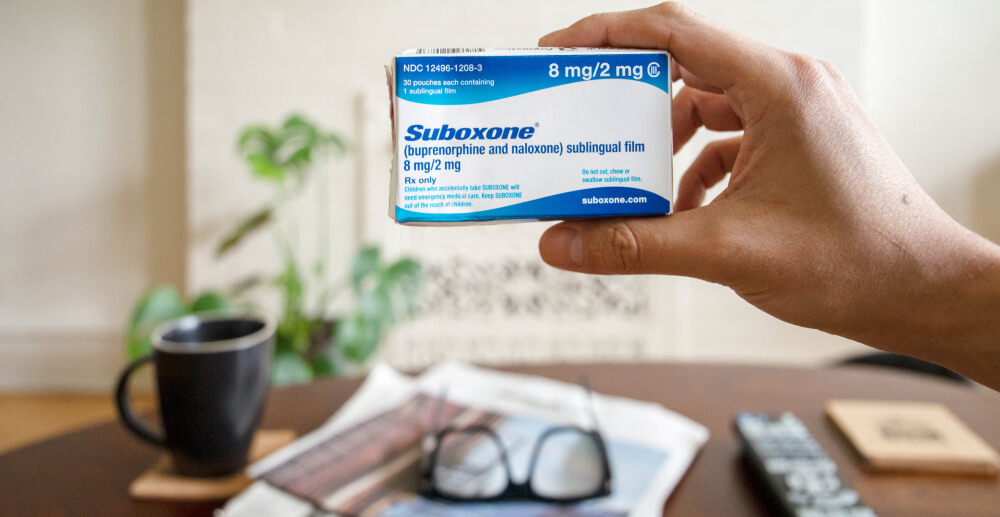Is Suboxone a controlled substance?
The short answer is yes. Buprenorphine, the main active ingredient in Suboxone (buprenorphine/naloxone), is a Schedule III controlled substance in the U.S.
All substances that are regulated under federal law are classified in one of five possible schedules, based on medical use, potential for misuse, and safety. Schedule V substances are considered to be at lower potential for misuse or dependence and to have significant medical use. Schedule I is considered to have the highest potential for misuse and no legitimate medical uses. According to the Drug Enforcement Administration, Schedule III substances, “have a potential for abuse less than substances in Schedules I or II and abuse may lead to moderate or low physical dependence or high psychological dependence.” Non-opioid drugs on this schedule include ketamine, the appetite suppressant phendimetrazine, and anabolic steroids.
For the longer answer, keep reading to learn more.
What does it really mean that Suboxone is a controlled substance?
It means different things depending on your point of view.
If you are considering what it means to your ability to get your prescribed medication, you should know that being a Schedule III controlled substance puts some limits on how many refills your provider can legally authorize at a time. Currently, that limit is a maximum of five refills within a six-month period. (Note that many providers will wait until you are stable in your recovery before they feel comfortable prescribing this many refills.) It also means that if something happens to your medication—like it being lost or damaged—it can be difficult for you to get a replacement supply. Your pharmacy may check your ID especially carefully when you pick up Suboxone. Schedule III drugs can be prescribed over the phone, sent in via e-prescription, or prescribed with an old-school paper prescription.
If you’re thinking about what it means in common opinion … Some people do hear “controlled substance” and fear that it means that Suboxone will be dangerous or addicting. For this reason, you may encounter stigma around taking Suboxone. This even crops up within the recovery community. Workit Health has a downloadable guide for loved ones that you can share with your friends and family to counter this kind of stigma by helping them learn more about Suboxone and other kinds of medication-assisted treatment.
If you’re thinking about what it means in your everyday life, it means that you should take extra care with your medication. Take your Suboxone as directed by your provider. Make sure you don’t misplace your supply. Bring a copy of your prescription with you if you travel so that you can confirm that you are authorized to possess Suboxone. Be sure to complete any required drug screens on time, so that your prescription isn’t delayed.
Does being a Schedule III controlled substance mean that Suboxone is the just same as other opioids?
No. While buprenorphine is an opioid, it’s not exactly like most other opioids. To begin with, most opioids are Schedule II controlled substances, considered to be at higher risk of misuse and of leading to a use disorder than Schedule III. These substances are more tightly controlled, allowing zero refills and not able to be prescribed by phone.
The reason buprenorphine is classified differently from other opioids is because it functions differently from other opioids. Most opioids bond with mu-opioid receptors in the brain and fully activate them, producing a feeling of euphoria and relieving pain. Buprenorphine bonds with those same receptors, but it only partially activates them. This allows it to relieve cravings and withdrawal symptoms, but most people who have been regular opioid users do not get a sense of euphoria. This is part of why it is considered to be at lower risk of misuse than other opioids. Suboxone combines buprenorphine with a small amount of naloxone to further reduce the risk of misuse.
Does being a Schedule III controlled substance mean Suboxone is likely to cause overdose?
No, Suboxone is not likely to cause an overdose, especially in people who have developed a tolerance to opioids. If you increase your dose past a certain point, buprenorphine does not produce a greater effect. You should only take your Suboxone as directed by your provider, but in people with opioid use disorder, it is extremely rare to overdose on buprenorphine.
Nearly all cases of overdose that involve buprenorphine also involve other drugs. Note that it is very dangerous to mix buprenorphine (or any other opioid) with other drugs or alcohol. Mixing drugs or alcohol with buprenorphine can lead to overdose, depressed breathing, coma, and even death.
Suboxone is a controlled substance, but that doesn’t mean it is something to be afraid of or ashamed of. It just means that it is subject to regulation and should be treated with respect.








